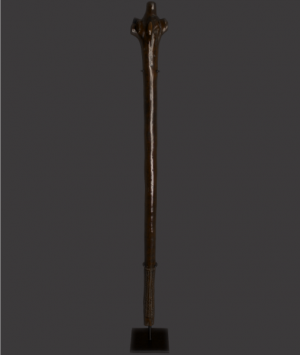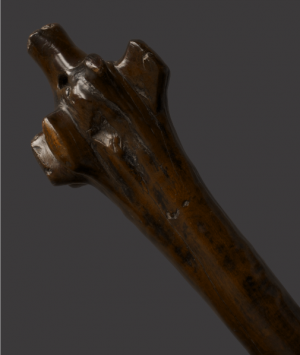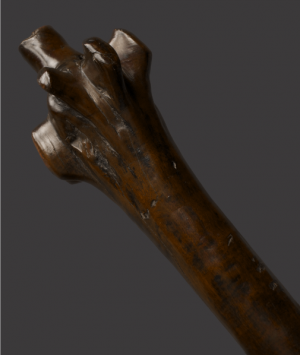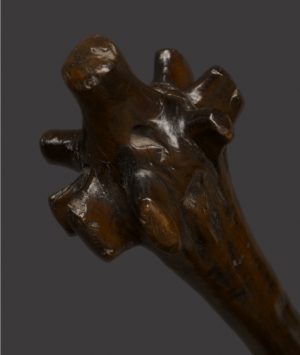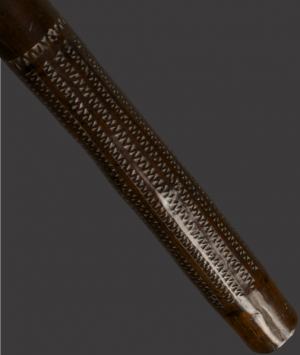Item number: 6464
A Fine 19th Century Fijian Rootstock Club, ‘Waka’
Ex English Private Collection
By the 19th century Fiji still remained relatively unknown to most of the world, however the islands were greatly feared among European sailors and with good reason as aside from the area being notoriously difficult to navigate, being surrounded by treacherous coral reefs, it was also steeped in horrifying rumors of savage barbarity and perhaps most alarmingly, human cannibalism. Far from being a fictional tale, cannibalism was indeed ferociously and enthusiastically practiced by the native inhabitants, forming part of their everyday life. Graphic and disturbing accounts recorded by early visitors to the islands, such as sailors and missionaries convey their horror and disbelief at witnessing this shocking custom.
Being eaten was not however a fate reserved solely for unfortunate European visitors. The different communities and tribes which existed on the small islands were in a seemingly constant state of savage warfare with one another, to such an extent that it would be regarded as very foolish for any person to venture from their village without being heavily armed and accompanied by others and certainly considered most unusual for an individual to achieve a peaceful death from old age. Extreme violence and brutality was normal to the indigenous population with some unfortunates sustaining horrendous injuries from club blows and surviving with severe physical disfiguration.
Of all the weapons available to the Fijians, the club was unrivaled in popularity. Designed to shatter the skull, killing an enemy in this manner brought more prestige to a warrior than by any other method. Many Fijian clubs found their way to England during the 19th Century as exotic souvenirs from encounters with the islanders both violent and acquired in trade. They were considered a most desirable item, their form, decoration and gruesome tally markings an embodiment of the dark romance surrounding the stories emanating from this part of the world. Public interest and appetite for viewing such artefacts was particularly keen, in turn giving a certain ‘prestige’, to the owner of such pieces.
The ‘Waka’, was a heavy two-handed club which utilised the natural mace like properties of the carefully selected sappling from which it was made, the thick buttress root being partially retained to form a lobed head. It was primarily designed and used for smashing skulls which it achieved with ease when wielded by an experienced warrior.
This fine and substantial example displays a possible “kill” mark to the shaft and very well carved, typical handgrip decoration, (‘tavatava’).
Dimensions (Approximate)
Length: 112cm, Overall Height: 120cm (Including stand)

